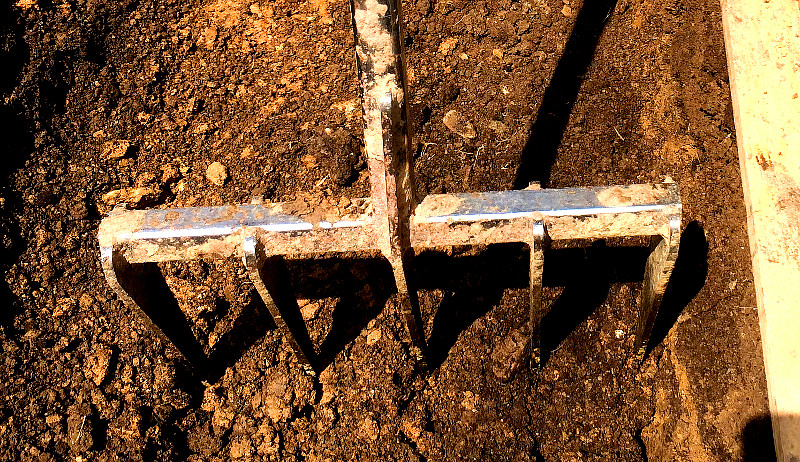
The broadfork is a favorite tool of mine (and many farmers), and I find myself employing it all over the farm. Last year I showed you how to choose the right one for you, and this year I hope to help you maximize that purchase by utilizing the broadfork in as many ways as possible.
Of course, the possibilities depend on the type of boradfork you purchased. Plowing, for instance, will not be a good use of a lightweight broadfork that is intended to aerate. So, consider as you look over this list that the type off broadfork you purchased determines what you can do with it. I’ve indicated below which style broadfork is best for each task.
1. Aeration & Deep Tillage
Soil aeration with the broadfork, often called “deep tillage,” can be done in the garden, in the orchard or anywhere you struggle with compaction and want healthier plants. Simply plunge the broadfork into the area you want to aerate, pull it back slightly before removing it and repeat the process.
The goal here is not to flip over the soil. You do not want to hurt the soil structure, only loosen it. You are trying to break up compaction and create a better environment for worms and roots to get around. If you want the best carrots or parsnips or any deep-rooted crops such as tomatoes, soil aeration is a must.
Applicable Broadforks: best with lighter-weight but sturdy broadforks. Heavier broadforks can wear the user down.
2. Plowing
Plowing is the act of turning over soil or sod. I have plowed a quarter acre using a broadfork (I was nine years younger), but it was hard. I recommend plowing in strips (called strip gardening), leaving grass between the beds so you don’t put work into plowing areas where you won’t grow anything. That will save you nearly half the work.
To plow, wait until the soil is neither wet nor very dry. It must be right in the middle. Simply plunge the fork as far into the soil as possible, then pull back until the clod releases itself. Next, use a shovel or your hands to flip the sod over. This is a great team job. Two people can make it go quickly.
Applicable Broadforks: Use only heavy or medium heavy duty broadforks for this, preferably with long tines. They must be sturdy to flip heavy sod.
3. Harvesting
The broadfork comes in handy for harvesting root crops such as potatoes, sweet potatoes, carrots and parsnips. Use caution to avoid damaging the roots as you harvest; this takes just a little practice.
To harvest with the broadfork, plunge the fork into the soil a few inches from the crop. Pull back until the plant is loose and pull it out. Avoid flipping the soil. One thing I really like about harvesting with the broadforks is the advantage of simultaneously aerating the soil. This job is better done as a team—one person plunges, the other pulls the crop—but it can also be done solo.
Applicable Broadforks: Any broadfork will work for this so long as the soil is not too compacted. If it is, use a heavier broadfork. Also remember that the heavier the broadfork, the more it will wear you out. So if you have a lot of harvesting, a lighter fork or even a small digging fork might be better.
4. Planting
Blueberries, tress, bulbs and all sorts of perennials require nicely prepared soil. The broadfork is a great tool for going into a small area of sod and working it up to the point of planting.
Simply choose an area you want to plant, plunge the fork into the soil and work up the requisite amount of space. You might want to fully plow it—flip it over—in some cases, but you can also simply aerate around the planting spot and then mulch heavily to suppress weeds and grass.
Applicable Broadforks: Use only heavy or medium-heavy duty broadforks for this unless the soil is already loosened




